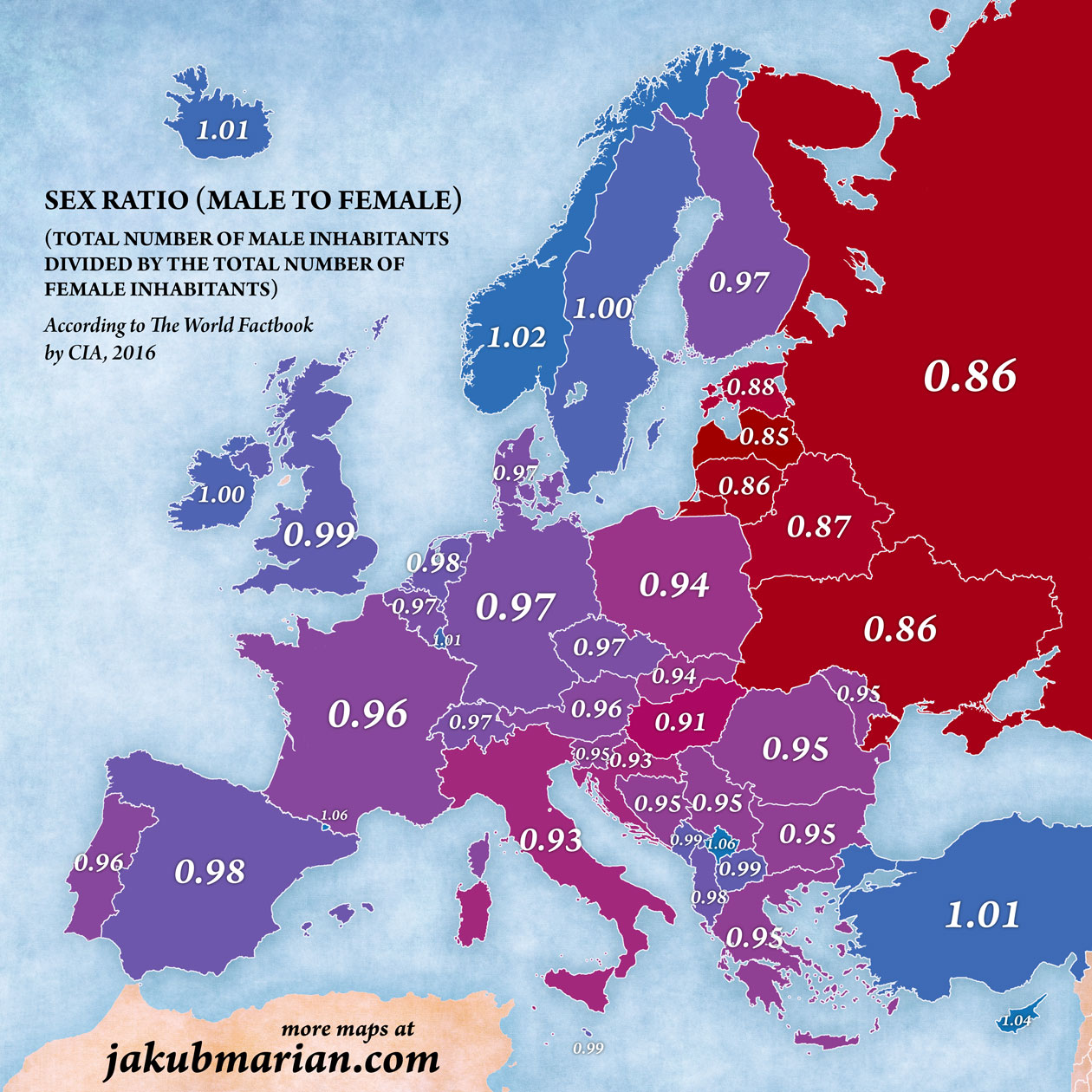The human sex ratio is defined as the ratio of the number of males to the number of females in a population; that is, a sex ratio greater than 1 implies that there are more men than women in a population, while a sex ratio below 1 indicates more women than men.
The sex ratio is influenced by three factors: birth rate, mortality rate, and migration. Differences in birth rate are insignificant in Europe (the sex ratio at birth falls between 1.05 and 1.07 in virtually all European countries; i.e. there are around 6% more boys born than girls on average). However, as you can see, the differences in the total sex ratio are much larger:

The pattern you can see on the map is due to the fact that males are subject to a significantly greater mortality rate, on average, than females, mainly due to having more physically demanding (or dangerous) jobs and less healthy lifestyles. This seems to be more prevalent in Eastern Europe.
Although migration does influence the sex ratio, since more migrants in Europe are women than men (usually by around 10% to 20%), the resulting differences are similarly negligible as the differences in birth rate. The total number of people gained or lost due to migration is usually less than 10% of the total population, so migration typically causes differences of less than 0.02 (20% of 10%) in the sex ratio.
 Tip: Are you a non-native English speaker? I have just finished creating a
Tip: Are you a non-native English speaker? I have just finished creating a  Web App
Web App
